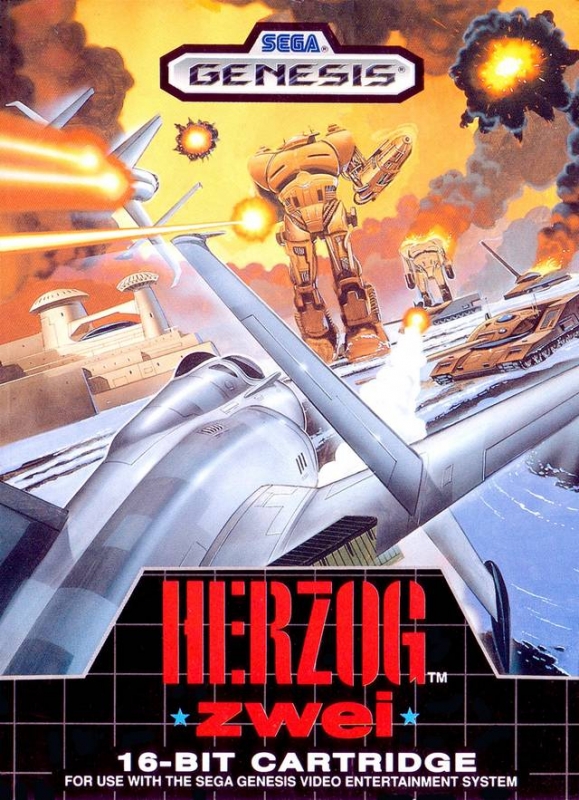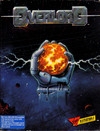
History of Real-Time Strategy: The Birth (1981 - 1991) - Article
by Taneli Palola , posted on 03 December 2018 / 5,685 ViewsTracking the history of an entire video game genre is quite an interesting, and undoubtedly difficult task, not least because it can be very problematic to pinpoint the exact origins of a given genre. Arguments can likely be made for a number of different games and points in time as the true birthplace of a type of video game, and that is certainly true for the real-time strategy genre. I certainly wouldn't argue against a number of different opinions people might have in regards to where and when the genre originated. This all is to say that the point I've decided to start with is not one that's universally agreed upon.
A large reason for this is the fact that what we today would recognize as an RTS formed over a long period of time, often from games that today wouldn't even be considered part of the genre, nor were they ever really intended to be in the first place. So, with this first in a series of five articles detailing the history of real-time strategy, we'll look at the early years of the genre, from its simple beginnings as features in other titles to the earliest titles that were recognizable as RTS games by today's standards. I hope you enjoy the journey through these years, from the early 1980s to the present day.
Setting the Template
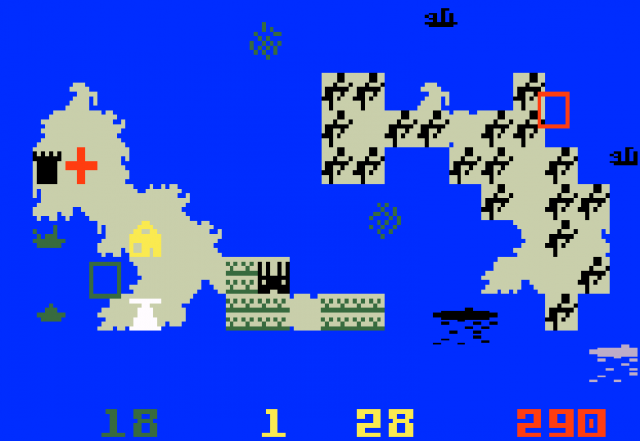
As already mentioned, tracing the origins of an entire genre can be quite a daunting task. Games that are today considered precursors to the modern RTS were deemed as such only with the benefit of hindsight. Looking back today we can naturally point out the games that influenced later developments, but there's also the issue of the genre evolving at a different pace in different regions, making a singular origin point even more difficult to pinpoint.
However, we'll begin this particular retrospective in the year 1981, when what is today often considered the first true ancestor to the modern RTS was released. Up to this point strategy games were exclusively turn-based, drawing most of their influence from classic tabletop war games. Real-time strategy, even as an idea, didn't really exist back then, and the first tentative steps towards the creation of the genre came with the release of Utopia on the Mattel Intellivision.
While still technically a turn-based strategy game, Utopia contained some real-time elements that effectively marks it as the earliest example of real-time being employed in any form in such a game. It was effectively something of a hybrid of turn-based and real-time gameplay. In Utopia two players each take control of an island nation and compete against each other. Players are tasked not only with defeating one another through acts of sabotage, but also keeping their island populations happy, lest they rebel. It's a delicate balancing act, where a single moment of indecision or mistake can cost you dearly against a clever opponent.
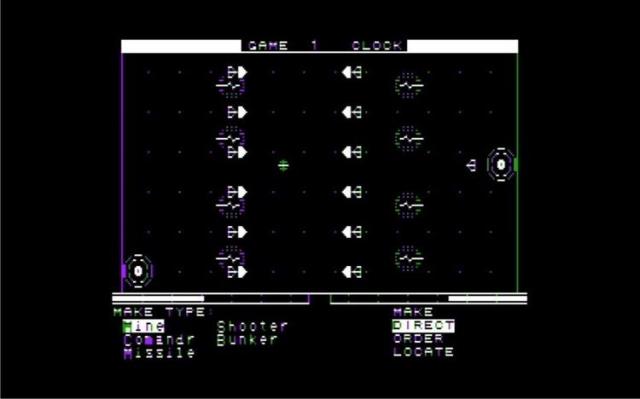
With Utopia the basic idea for a real-time strategy game was born, but the genre was still far from fully-formed. Still, slowly more strategy games with real-time elements began to emerge during the early 80s. The next such title was most likely the 1982 release Cytron Masters, which launched on Apple II computers. Designed by Dan Bunten, the game featured the ability to command specialized units in real-time, and as such could be considered the first real RTS title ever developed. On the other hand it is perhaps better described as a real-time tactics game, owing to its lack of base building elements or proper resource management.
Regardless, Cytron Masters is another notable step towards what we would today call a real-time strategy game, albeit admittedly still in a very primitive form. Around the same time a game called Cosmic Conquest for the Apple II won a game design contest for Byte magazine. Described as a ”game of real-time action and strategic decision making”, it could be another example of an early attempt at making a real-time strategy game. However, I could not find a single video or image from the game, so how exactly it looks or plays is anyone's guess.
The early 1980s were still very much a period of experimentation and trying to figure out different ways to make a real-time strategy game. In Legionnaire (1982) the player takes command of the Roman legions in a fight against computer controlled barbarians, but with little strategic depth it was also more of a real-time tactics game than anything else. Stonkers (1983) added an element of depleting resources to the genre, with combat units using up supplies over time, which must then be replenished with supply units in real-time.
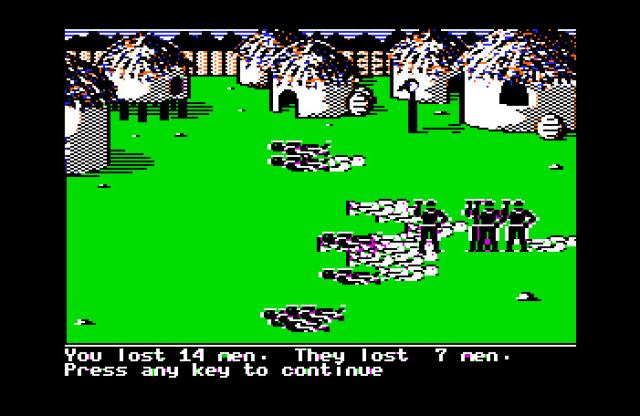
Around the same time in Japan the strategy genre was evolving separately from the rest of the world, with the earliest example of a game that contained some elements of real-time strategy being the 1983 title Bokosuka Wars. It can be seen as another notable precursor to the modern RTS, which would in fact eventually be fully realized by a certain Japanese developer several years later.
Another potential candidate for the title of first proper RTS game ever created is The Ancient Art of War (1984). With four different available units to use, the game featured rock-paper-scissors inspired balancing (something that would become very common in the genre moving forwards). Basically, each unit had a strong and a weak counter; knights beating barbarians, barbarians beating archers, and archers beating knights. The fourth class were spies, which couldn't fight but could see farther than the other classes and also moved faster.
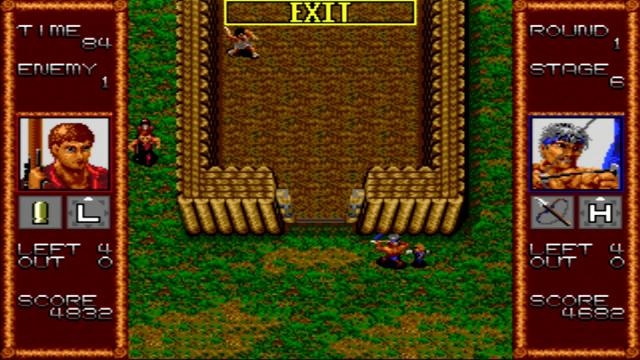
Again, however, certain key elements were still missing. Most notably, there was no resource management or base construction in The Ancient Art of War. Up to this point most of the core elements of the RTS genre had been in use in one form or another in various different strategy games, but none had yet put them all together in one package. That day was getting closer and closer with each new step though.
Between 1985 and 1987 various different titles experimented with the strategy genre, introducing new elements and developing existing ones further. Some notable examples were Nether Earth and The Ancient Art of War at Sea, both of which released in 1987. Still, it was only by 1988 that the final few bricks for the foundation of the RTS genre were being laid, with Dan Bunten's Modern Wars, Sega's Gain Ground, and Nethersoft's Herzog paving the way for the first true real-time strategy game, which would release the following year.
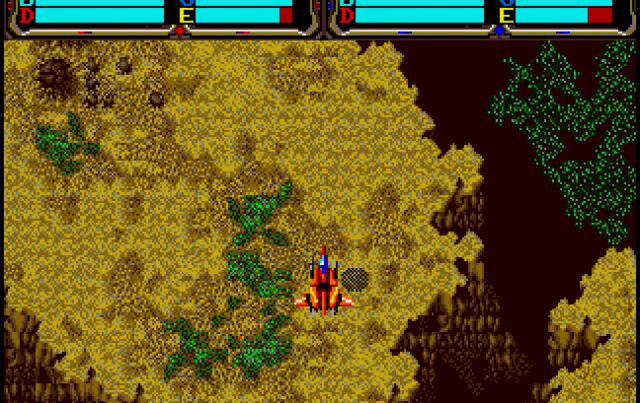
Modern Wars featured many elements that are now a standard part of the RTS genre, including fog of war and terrain that affects unit movement, while Herzog was effectively a beta version of the game that is often considered the origin point of the RTS genre as we know it today. Many of these specific elements had existed in video games for a long time by this point. Fog of war, for example, had been first introduced back in 1977 in the game Empire and had appeared in numerous turn-based strategy games before Modern War used it in a real-time environment.
In 1989 the genre, though still without its name, was finally given form by a developer. As I've already discussed, arguments can be made for numerous different titles as being the first proper real-time strategy, but it is generally agreed that the game in question is Nethersoft's Herzog Zwei (1989). Though the name ”real-time strategy” had still not been coined at this stage, this was effectively the game that defined the basic elements of real-time strategy, putting them all together in a single package.
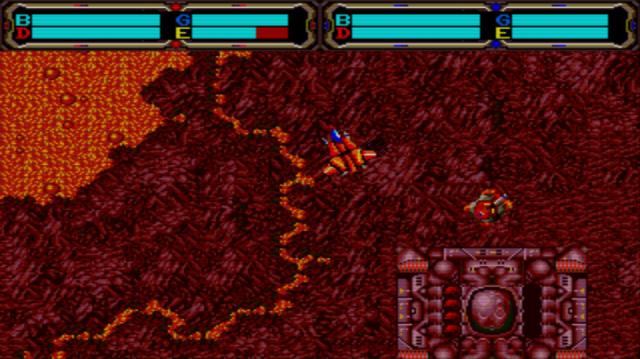
Herzog Zwei features elements such as unit construction, resource management and production, and base control and destruction, all happening in real-time. The player is directly in control of only one unit - a giant mech, with which new units can be built and airlifted to different parts of the map. These units will then act according to orders given to them by the player, until they are either destroyed or run out of fuel. In addition, around the map there are nine bases, which provide the side who control them with resources to build more units at a faster rate.
While still obviously fairly primitive in scope and gameplay by today's standards, Herzog Zwei was the progenitor of the RTS genre. Its fast-paced, almost hectic gameplay could almost be seen as a precursor to modern competitive real-time strategy games, where a single moment of hesitation not spent maximizing your actions can mean defeat. In addition, with the player only directly controlling a single powerful unit in the game, Herzog Zwei can also be seen as an early example of Action RTS/MOBA games like Dota 2 or League of Legends.
As such, countless different RTS titles to follow can trace their lineage directly back to this one game. Still, even the basic gameplay features of the genre were far from being set in stone, as almost every new release would still do things differently. After all, there still was no such thing as real-time strategy in name at this stage, and many developers were trying out different things to see what would work best. It just so happened that certain highly influential later games would use the template set by Herzog Zwei to build upon, and they would then go on to define the entire genre moving forwards.
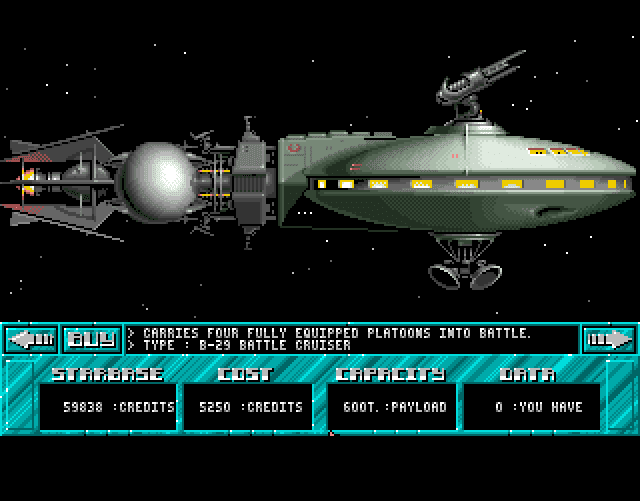
Of course, this template was still far from being set in stone, and many new titles over the following two years would keep experimenting with the basic mechanics of the genre and even feature completely different styles of gameplay from one another. 1989 may have been the watershed moment for the genre, but the influence of Herzog Zwei would not really materialize in any tangible way until a few years later.
At the start of the new decade the genre was quickly beginning to take form as an increasing number of strategy titles with real-time elements were being released, most of which focused on certain specific elements of the genre, while largely eschewing others. One of the notable early releases of the 90s was called Supremacy: Your Will Be Done (known as Overlord in the US). The game focused heavily on resource and economic management, but didn't give the player direct control over their military units.
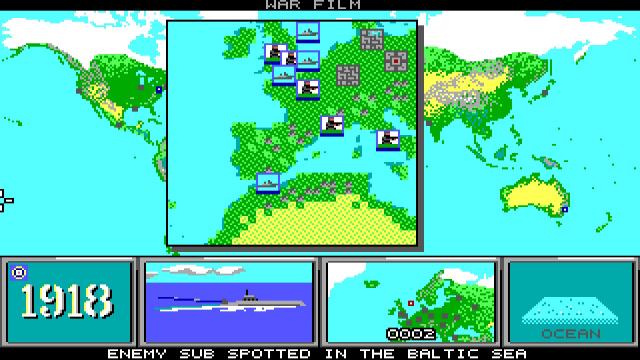
Another important title from the same year was another Dan Bunten-designed strategy title – Command HQ (1990). While in terms of gameplay it didn't really innovate in terms of new mechanics, but it was one of, if not the first RTS style game to make use of a mouse controlled interface, something that would soon become a standard in the genre. In general Command HQ was one of the most mechanically complex strategy games yet, with a myriad of different things the player had to keep track of at all times to succeed, from producing and deploying units to battlefields to managing your intelligence and economy.
Finally, in 1991 Sensible Software developer a strategy game called Mega Lo Mania, which was very similar to the earlier mentioned Supremacy in terms of gameplay focus, if not necessarily in look or mechanics. Once again, you did not have direct control over your units, unit management basically coming down to allocating them to different roles and sending them off to do battle or otherwise take over new regions. However, Mega Lo Mania made up for this in other places, most notably in how detailed and deep its ecological and technological systems were.
In Mega Lo Mania the player had to research new technologies, gather resources for weapons development, build structures, and form armies. This was all done by allocating available units to different roles, and the more units allocated to a specific task the faster and more effective said task was completed. To add to this, units left unallocated would eventually procreate and in doing so created more units for the player to use. In the end, though, the one thing that makes Mega Lo Mania such a significant milestone in the history of RTS is the fact that it is the first game in the genre to feature a technology tree.
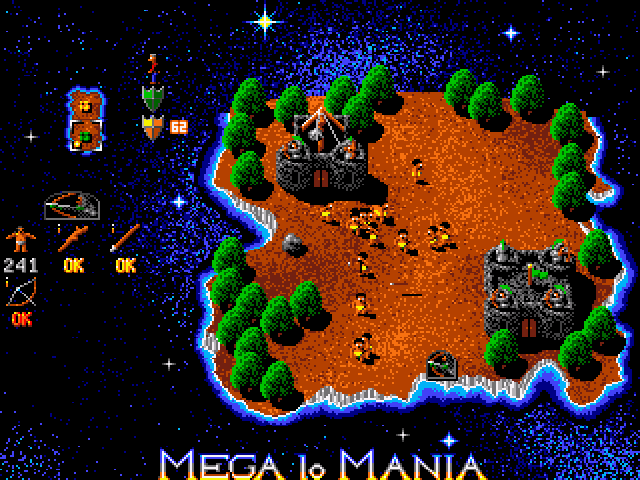
Between 1981 and the end of 1991 all of the core pieces of the real-time strategy genre had been created and, for all intents and purposes, were now firmly in place. Naturally, I have only mentioned some of the titles released during this time, and many other games besides the ones mentioned here had a hand in the genre's development. Yet, even with all of that the genre still didn't have an actual recognized name. Real-time strategy as a concept didn't really exist at this point, but that was about to change very soon.
That, however, will have to wait until next time. The period covered in this article saw the gradual development of the real-time strategy genre, from its early tentative steps when a few strategy games incorporated some real-time elements into their gameplay in the early 1980s, to being on the cusp of exploding in popularity at the start of the following decade. Next time, we'll cover this rise in popularity and the genre's entry into the top echelon of gaming, with numerous landmark titles becoming huge successes.
Sources:
- Byte Magazine Volume 07 Number 12 (1982)
- Essential 50: Herzog Zwei (1up.com)
- The history of real-time strategy games (Ars Technica)
- 1001 Video Games You Must Play Before You Die (ed. Tony Mott)
More Articles
Very interesting read! I'm a little embarassed to admit that the only game mentioned I've even heard of is Herzog Zwei and I basically know nothing about it.
Honestly, before I started doing research for this article I didn't know many of them either. Much of the early development for the RTS-genre was fairly unknown to me, and I would imagine a lot of other people as well. Basically, Herzog Zwei, Mega Lo Mania and Supremacy were the only ones I really knew beforehand, while some others I had heard the name of.
Supremacy also sounds familiar to me, although I might be confusing it with Supreme Commander haha
I played Mega-Lo-Mania on an Amiga, and heard about Herzog Zwei and Supremacy.
I actually almost mixed up Utopia, as there's a much later Amiga game with that name and more like an early RTS/4X mix: https://en.wikipedia.org/wiki/Utopia:_The_Creation_of_a_Nation
Well researched, great to see the late great Danielle Bunten impact on the genre shining through.
Nice read. Also nice to see PC gaming getting a mainstay genre getting a topic this time around.
I'm really happy to see an article about Real Time Strategy games, they really deserve more attention than they are currently getting nowadays.
So sad I missed this when it first got released. I'm a bit perplexed by the inclusion of Mega-Lo*Mania but at the same time no mention of Populous, which was Mega-lo-manias inspiration.






















